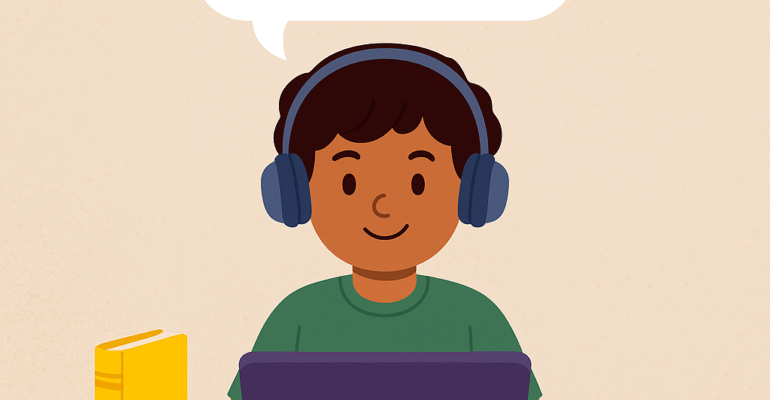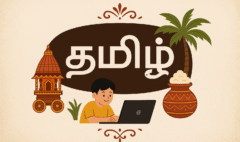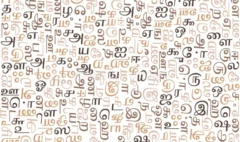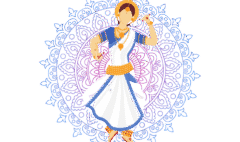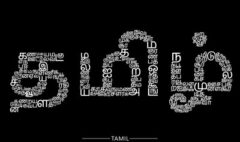An Introduction to Tamilian Folk Music and Dance
An Introduction to Tamilian Folk Music and Dance
An Introduction to Tamilian Folk Music and Dance
In Tamil Nadu, the air is often alive with rhythm and song. Beyond the polished stages of classical performance, there exists a vibrant, pulsating world of folk art that is the true soul of the land. It’s a world where music isn’t just for listening; it’s an intrinsic part of daily life, celebration, and storytelling. For those looking to connect with the heart of Tamil culture, there is no better starting point than its folk music and dance. This guide will introduce you to the rich landscape of Tamil folk music and the captivating movements of folk dance in Tamil, revealing how these art forms are a powerful bridge to understanding a people, their history, and their spirit.
These are not just performances; they are living traditions passed down through generations. From the thunderous beat of a percussion instrument to the graceful sway of a dancer, every element tells a story. We will delve into the history, forms, and vocabulary of this traditional music, showing how a deeper understanding can enrich your appreciation for Tamil culture and language.
The Soul of the Land: What is Tamil Folk Music?
While Tamil Nadu is home to the intricate and highly-structured Carnatic classical music, its folk music tells a different story. Originating in rural communities, fields, and village squares, Tamil folk music is the music of the common people. It is raw, emotional, and deeply connected to the cycles of life, from sowing and harvesting to celebrating festivals and mourning the departed. It is often characterized by simple, repetitive melodies that are easy to remember and sing along to, making it a perfect tool for language learning.
Unlike classical music, which often requires years of formal training, folk music is learned organically through participation. This communal aspect makes it a powerful way to understand social bonds and cultural norms. The songs often narrate historical events, folk tales, and social commentary, making them a window into the values and beliefs of the Tamil people. The vocabulary in these songs is often a great resource for learning about everyday life, nature, and relationships, providing a practical foundation for language learners.
The Rhythm of Life: Key Instruments and Forms
The sounds of traditional music are what give it its soul. The instruments used are often simple, powerful, and deeply symbolic. Understanding them is the first step in appreciating the music itself.
- Parai: This is perhaps the most ancient and culturally significant percussion instrument. A large, circular drum made of animal hide stretched over a wooden frame, the Parai was historically used to announce important events—from war and victory to festivals and deaths. Its powerful, rhythmic beat is the heartbeat of Tamil folk music and is central to many dances.
- Thavil and Nadaswaram: Often played together, these are a power duo. The Nadaswaram, a double-reed wind instrument, and the Thavil, a barrel-shaped drum, are essential to temple ceremonies and village festivals. Their sound is considered auspicious and is a familiar part of life in Tamil Nadu.
- Urumi: A smaller, hourglass-shaped drum, the Urumi is often used in spiritual dances. Its unique sound is believed to have mystical properties and is a vital part of many ritualistic performances.
- Villu Paatu: This unique form of musical storytelling literally means “bow song.” The instrument is a large bow with bells attached, which the performer strikes with sticks while narrating a story. It’s a complete form of entertainment that combines music, recitation, and drama, making it a fantastic way to learn Tamil narratives.
When you listen to this music, you can begin to pick up on the **cultural music vocabulary**. Words like **Thalam** (rhythm), **Isai** (music), **Paatu** (song), and **Aattam** (dance) are the building blocks of understanding these art forms. As you listen to the songs and the stories they tell, you are also building your vocabulary and comprehension skills without even realizing it.
Storytelling Through Movement: Exploring Folk Dance in Tamil
Where there is music, there is often dance. Folk dance in Tamil is a vibrant form of storytelling, with each movement and costume carrying a deeper meaning. These dances are a way of expressing devotion, celebrating community, and reenacting ancient myths and legends. Here are a few key forms:
- Karagam: One of the most famous forms of folk dance in Tamil, Karagam is a dance of devotion. Dancers balance a pot of water on their heads, often adorned with flowers and a parrot. They perform a series of acrobatic movements without spilling a single drop. It is a thrilling performance that honors the goddess Mariamman and showcases incredible skill and control.
- Kavadi Aattam: This dance is a sacred ritual performed by devotees of Lord Murugan. Dancers carry a “Kavadi,” a structure decorated with flowers and peacock feathers, as an offering. The rhythmic movements and spiritual chants are an act of penance and a beautiful expression of faith.
- Oyilattam: Meaning “the dance of beauty,” Oyilattam is a graceful and rhythmic dance performed by a group of men. They wear ankle bells and move with intricate footwork and fluid arm movements, often using colored scarves to add to the visual spectacle. It is a dance that celebrates grace and the beauty of human movement.
- Theru Koothu: More than just a dance, Theru Koothu is a street play that combines acting, singing, and dancing. It is a powerful form of public theater that tells stories from mythology and folklore. The performers wear elaborate costumes and makeup, and the play often serves as a means of social commentary, making it a truly immersive cultural experience.
Beyond Entertainment: Learning Tamil Through Folk Art
The beauty of learning Tamil through these folk arts is that it provides context. The lyrics in Tamil folk music are often simpler and more repetitive than in classical forms, making them easy for beginners to follow. They are filled with words for everyday objects, actions, and emotions. The stories told through `folk dance in Tamil` can be a great way to improve listening comprehension and practice narrative skills. By watching these performances, you are not just a passive observer; you are an active learner, absorbing the culture and language in a holistic and meaningful way.
Conclusion
Tamil folk music and dance are more than just art forms; they are the heart and soul of a civilization. They are a powerful reminder that culture is a living, breathing thing that is passed down through generations, not in books, but in songs, stories, and movements. By exploring these vibrant traditions, you can give your child a deeper understanding of their heritage and a more profound connection to the Tamil language.
At Powerkid Tamil, our lessons are designed to go beyond the basics. We use elements of traditional music and storytelling to make learning Tamil an immersive cultural experience. Our tutors can help your child understand the lyrics of their favorite songs and the stories behind the dances. Take the first step toward a richer, more connected learning journey today.

